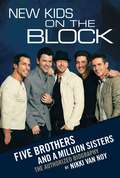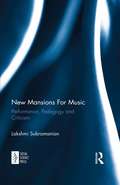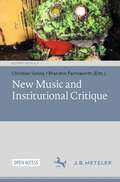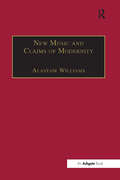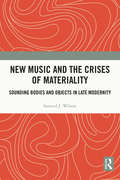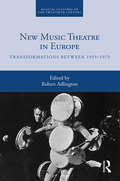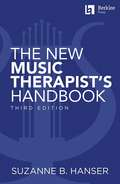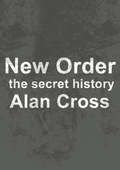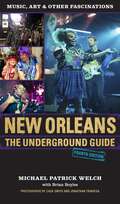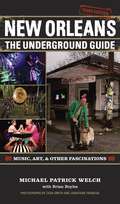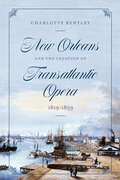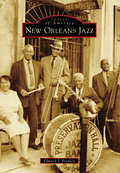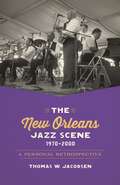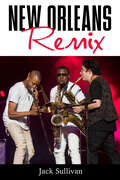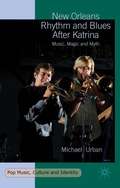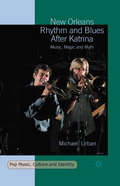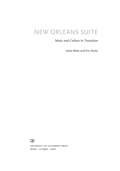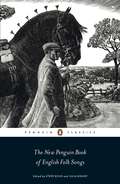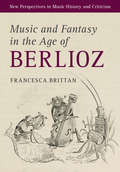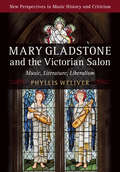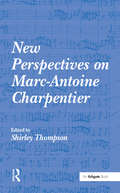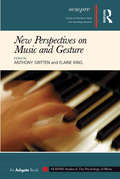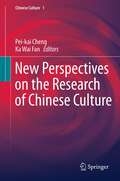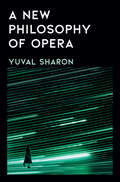- Table View
- List View
New Kids on the Block
by Nikki Van NoyJordan, Jon, Joe, Donnie, and Danny. They set the bar for every boy band that followed and changed the course of pop music forever. In the 1980s, for millions of young girls around the world, they were gods. But behind the scenes, they were just kids. In this authorized biography of the band, the New Kids tell it all to rock journalist Nikki Van Noy. From makeshift stages in Boston clubs to soldout shows at Madison Square Garden, through winning American Music Awards and selling 80 million records, the New Kids on the Block (NKOTB) were a rite of passage and a touchstone of youthful memories. Scoring platinum albums, and with a series of sold-out international tours, NKOTB blazed through North and South America, Europe, Australia, and Asia, leaving throngs of screaming teen and tween girls in their wake. But after a few heady years, the guys (and their fans) grew up, and moved on. The New Kids disbanded in 1994 and, for nearly fifteen years, there was every reason to believe that the NKOTB phenomenon was over once and for all. But then an unexpected thing happened. The band (and their fans) got a second chance to relive their youth when NKOTB reunited in 2008. And they realized that this band has something special--an unbreakable bond with their fans and with each other that has only strengthened with the passage of time. Today, fans both old and new celebrate the band's triumphant comeback with sold-out concerts, cruises, and top-selling albums. And this time, Jordan, Jon, Joe, Donnie, and Danny are enjoying it all right alongside them. An intimate, all-access backstage pass to everything New Kids on the Block, from their meteoric rise to fame Nikki Van Noy talks directly to those loyal fans, as well as to all five band members and their families, weaving their stories together in this no-holds-barred chronicle. With frankness and honesty, each New Kid recalls nearly thirty years of experience with the group, both on and off the stage. Like a time machine, this book will take you right back--giving you an inside look at the New Kids like you've never seen them before. An intimate, all-access backstage pass to everything New Kids on the Block, from their meteoric rise to fame in the 1980s to the band's breakup in the 1990s-- and their triumphant comeback today "We're siting there, and all of a sudden Jordan said, 'You know we're gonna be famous, right? We're gonna be famous.' And he was right." --Joe "All that stuf f we never experienced in college, we experienced on the road, just the five of us." --Jon "There's just no words to describe it. I guess the only thing similar is a Super Bowl quarterback winning it for his hometown." --Danny "It's amazing. It's almost like going through life and then geting another chance at life, knowing what you know now." --Jordan "My dad said, 'I'll tell you what--if you ever make it big and you come home and you've changed, I'm gonna kick your ass.' That always rang in my head." --Donnie
New Mansions For Music: Performance, Pedagogy and Criticism
by Lakshmi SubramanianThe essays in New Mansions for Music: Performance, Pedagogy and Criticism look at one of the most ancient and rigorous classical musical traditions of India, the Karnatik music system, and the kind of changes it underwent once it was relocated from traditional spaces of temples and salons to the public domain. Nineteenth-century Madras led the way in the transformation that Karnatik music underwent as it encountered the forces of modernization and standardization. This study also contributes to our understanding of the experience of modernity in India through the prism of music. The role of Madras city as patron and custodian of the performing arts, especially classical music offers an invaluable perspective on the larger processes of modernization in India. As the title suggests, the areas of classical music, which were most influenced by these developments were pedagogy or modes of musical transmission, performance conventions and criticism or music appreciation. Once the urban elite demanded the widening of the teaching of classical music, traditional modes of music instruction underwent a major change involving a breakdown of the gurushishya parampara or the tradition wherein the teacher imparted knowledge to a chosen few. Caste and kinship were important determining factors for the selection of these shishyas or students, but in modern institutions like the universities these boundaries had to be demolished. Simultaneously, the public staging of music brought the performer into a new relationship with his audience, especially as the art form became subject to validation and criticism by the newly emerging music critic. In an immensely readable book peppered with anecdotes and conversations with leading musicians and critics of the day, as well as humorous visual representations, part caricature, part satirical, the author describes a rapidly changing society and its new look in early twentieth century Madras.
New Music and Institutional Critique (Ästhetiken X.0 – Zeitgenössische Konturen ästhetischen Denkens)
by Christian Grüny Brandon FarnsworthWhile institutional critique has long been an important part of artistic practice and theoretical debate in the visual arts, it has long escaped attention in the field of music. This open access volume assembles for the first time an array of theoretical approaches and practical examples dealing with New Music’s institutions, their critique, and their transformations. For scholars, leaders, and practitioners alike, it offers an important overview of current developments as well as theoretical reflections about New Music and its institutions today. In this way, it provides a major contribution to the debate about the present and future of contemporary music.
New Music and the Claims of Modernity
by Alastair WilliamsSince 1945 the emphasis in new music has lain in a desire for progress, a concept challenged by postmodernist aesthetics. In this study, Alastair Williams identifies and explores the recurring issues and problems presented by post-war music. Part one examines the German philosopher, Theodor Adorno's portrayal of modernity and his understanding of modernism in music. This is followed by a survey of the developments in music from late Beethoven to Schoenberg, the two composers whose works provided the main anchor points for Adorno's philosophy of music. Parts two and three indicate the ways in which Adorno's aesthetics are pertinent to an understanding of new music. Part two comprises a close examination of the music of Pierre Boulez and John Cage, composers who represent extreme, though related, aspects of contemporary music thought: the primacy of structure versus dissolution. Williams' views the music of Ligeti as an exploration of the interface between these two extremes, personifying Adorno's advocation of an aesthetic which attempts to embrace all its dissimilar parts. In part three the consequences of modernism and the aesthetic approaches of Derrida and de Mann are considered, together with the music of Wolfgang Rihm. Williams concludes with a survey of contemporary music and the postmodernist desire to include a range of compositional references.
New Music and the Crises of Materiality: Sounding Bodies and Objects in Late Modernity
by Samuel WilsonThis book explores the transformation of ideas of the material in late twentieth- and early twenty-first-century musical composition. New music of this era is argued to reflect a historical moment when the idea of materiality itself is in flux. Engaging with thinkers such as Theodor Adorno, Sara Ahmed, Zygmunt Bauman, Rosi Braidotti, and Timothy Morton, the author considers music's relationship with changing material conditions, from the rise of neo-liberalisms and information technologies to new concepts of the natural world. Drawing on musicology, cultural theory, and philosophy, the author develops a critical understanding of musical bodies, objects, and the environments of their interaction. Music is grasped as something that both registers material changes in society whilst also enabling us to practice materiality differently. book focuses on how recent music and sound art have expressed notions of the body and the material environment. It engages with thinkers such as to demonstrate how this music relates to changing material conditions, from the
New Music at Darmstadt
by Martin IddonNew Music at Darmstadt explores the rise and fall of the so-called 'Darmstadt School', through a wealth of primary sources and analytical commentary. Martin Iddon's book examines the creation of the Darmstadt New Music Courses and the slow development and subsequent collapse of the idea of the Darmstadt School, showing how participants in the West German new music scene, including Herbert Eimert and a range of journalistic commentators, created an image of a coherent entity, despite the very diverse range of compositional practices on display at the courses. The book also explores the collapse of the seeming collegiality of the Darmstadt composers, which crystallised around the arrival there in 1958 of the most famous, and notorious, of all post-war composers, John Cage, an event Carl Dahlhaus opined 'swept across the European avant-garde like a natural disaster'.
New Music Theatre in Europe: Transformations between 1955-1975 (Musical Cultures of the Twentieth Century)
by Robert AdlingtonBetween 1955 and 1975 music theatre became a central preoccupation for European composers digesting the consequences of the revolutionary experiments in musical language that followed the end of the Second World War. The ‘new music theatre’ wrought multiple, significant transformations, serving as a crucible for the experimental rethinking of theatrical traditions, artistic genres, the conventions of performance, and the composer’s relation to society. This volume brings together leading specialists from across Europe to offer a new appraisal of the genre. It is structured according to six themes that investigate: the relation of new music theatre to earlier and contemporaneous theories of drama; the use of new technologies; the relation of new music theatre to progressive politics; the role of new venues and environments; the advancement of new conceptions of the performer; and the challenges that new music theatre lays down for music analysis. Contributing authors address canonical works by composers such as Berio, Birtwistle, Henze, Kagel, Ligeti, Nono, and Zimmermann, but also expand the field to figures and artistic developments not regularly represented in existing music histories. Particular attention is given to new music theatre as a site of intense exchange – between practitioners of different art forms, across national borders, and with diverse mediating institutions.
The New Music Therapist's Handbook
by Suzanne B. HanserLearn essential concepts and practices for providing music therapy. The New Music Therapist's Handbook has been an essential guide for music therapists worldwide since the 1990s. You will learn state of the art, data-driven approaches to providing care in a wide variety of therapeutic contexts. These practices are based on the most up-to-date science and experiences of thousands of patients and clients. Through detailed discussions of research and practice, case studies, strategies, and clinical approaches, you will learn how music therapy is a uniquely effective approach. In this third edition, Dr. Hanser's essential handbook has been updated and expanded to reflect the latest developments in healthcare and education. It includes valuable information for both students and professionals, particularly in meeting the competencies of the Board Certification for Music Therapy and standards of practice for the American Music Therapy Association.
New Order: The Secret History (The\secret History Of Rock Ser.)
by Alan CrossAlan Cross is the preeminent chronicler of popular music.Here he provides a history of New Order and what happened after the death of Ian Curtis.This look at the group—"A Band of Substance"—is adapted from the audiobook of the same name.
New Orleans: The Underground Guide, 4th Edition
by Michael Patrick Welch Brian Boyles Zack Smith Jonathan TraviesaNew Orleans: The Underground Guide shows visitors how to experience the Big Easy like a local, looking past staples like beignets and Bourbon Street to reveal a city bursting with contemporary and experimental art, genre-busting DJs, international cuisines, and even kid-friendly activities.This fully updated edition offers an expansive collection of alternative recommendations for exploring the city of Mardi Gras, brass bands, and weekly festivals. Featuring over two hundred new entries on local bands, rappers, restaurants with live music, galleries, and more, this guidebook takes readers on a one-of-a-kind journey through New Orleans, giving advice on everything from what thrift stores and bookshops to visit to what bands to catch in concert and what parades to attend.Lead author Michael Patrick Welch provides a detailed guide of the less traditional, more adventurous side of New Orleans, from bars that hold readings of poetry and erotic literature to costume shops that sell handmade masks, party supplies, and all the parade throws you can carry. Drawing on the wisdom of New Orleans celebrities, journalists, artists, and musicians from throughout the Crescent City, the fourth edition of New Orleans: The Underground Guide is an authentic and reliable resource for where locals listen to music, art hop, shop, eat, drink, and let loose.
New Orleans: The Underground Guide, 4th Edition
by Michael Patrick Welch Brian Boyles Zack Smith Jonathan TraviesaRed beans and rice, trad jazz, and second lines are the Big Easy's calling cards, but beyond where the carriage rides take you is a city brimming with genre-defying music, transnational cuisine, and pockets of wild, artistic locals that challenge preconceived notions of what it means to be New Orleans. With a respectful nod to the traditional and a full embrace of the obscure, New Orleans: The Underground Guide is a resource for discovering the city as it really is -- as much brass bands and boas as it is bounce and bicycle tours. From a speakeasy in the Bywater neighborhood to the delightfully sketchy vibe of St. Roch Tavern, lead author Michael Patrick Welch uncovers an unexpected tableau of musicians, venues, and novel ways to pass the bon temps. Contents include but are not limited to: where to get naked, how to make the most of Mardi Gras according to banjo player Geoff Douville, what to order from the delicious Slavic menu at Siberia, where to find the New Orleans Giant Puppet Festival, how to catch a performance by the New Movement comedy troupe, where to rent a kayak, and how to get in on the "bed and beverage" experience at the Royal Street Inn.
New Orleans and the Creation of Transatlantic Opera: 1819–1859 (Opera Lab: Explorations in History, Technology, and Performance)
by Charlotte BentleyA history of nineteenth-century New Orleans and the people who made it a vital, if unexpected, part of an emerging operatic world.New Orleans and the Creation of Transatlantic Opera, 1819–1859 explores the thriving operatic life of New Orleans in the first half of the nineteenth century, drawing out the transatlantic connections that animated it. By focusing on a variety of individuals, their extended webs of human contacts, and the materials that they moved along with them, this book pieces together what it took to bring opera to New Orleans and the ways in which the city’s operatic life shaped contemporary perceptions of global interconnection. The early chapters explore the process of bringing opera to the stage, taking a detailed look at the management of New Orleans’s Francophone theater, the Théâtre d’Orléans, as well as the performers who came to the city and the reception they received. But opera’s significance was not confined to the theater, and later chapters of the book examine how opera permeated everyday life in New Orleans, through popular sheet music, novels, magazines and visual culture, and dancing in its many ballrooms. Just as New Orleans helped to create transatlantic opera, opera in turn helped to create the city of New Orleans.
New Orleans Jazz
by Edward J. BranleyFrom the days when Buddy Bolden would blow his cornet to attract an audience from one New Orleans park to another, to the brass bands in clubs and on the streets today, jazz in New Orleans has been about simple things: getting people to snap their fingers, tap their toes, get up and clap their hands, and most importantly dance! From the 1890s to World War I, from uptown to Faubourg Treme and out to the lakefront, New Orleans embraced this uniquely American form of music. Local musicians nurtured jazz, matured it, and passed it on to others. Some left the city to make their names elsewhere, while others stayed, playing the clubs, marching in the parades, and sending loved ones home with "jazz funerals." Older musicians mentored younger ones, preserving the traditions that give New Orleans such an exciting jazz scene today.
The New Orleans Jazz Scene, 1970-2000: A Personal Retrospective
by Thomas W. JacobsenIn 1966, journalist Charles Suhor wrote that New Orleans jazz was "ready for its new Golden Age." Thomas W. Jacobsen's The New Orleans Jazz Scene, 1970-2000 chronicles the resurgence of jazz music in the Crescent City in the years following Suhor's prophetic claim. Jacobsen, a New Orleans resident and longtime jazz aficionado, offers a wide-ranging history of the New Orleans jazz renaissance in the last three decades of the twentieth century, weaving local musical developments into the larger context of the national jazz scene.Jacobsen vividly evokes the changing face of the New Orleans jazz world at the close of the twentieth century. Drawing from an array of personal experiences and his own exhaustive research, he discusses leading musicians and bands, both traditionalists and modernists, as well as major performance venues and festivals. The city's musical infrastructure does not go overlooked, as Jacobsen delves into New Orleans's music business, its jazz media, and the evolution of jazz edu-cation at public schools and universities. With a trove of more than seventy photographs of key players and performances, The New Orleans Jazz Scene, 1970-2000 offers a vibrant and fascinating portrait of the musical genre that defines New Orleans.
New Orleans Remix (American Made Music Series)
by Jack SullivanSince the 1990s, New Orleans has been experiencing its greatest musical renaissance since Louis Armstrong. Brass band, funk, hip hop, Mardi Gras Indian, zydeco, and other styles are rocking the city in new neighborhood bars far from the Bourbon Street tourist scene. Even "neotraditional" jazz players have emerged in startling numbers, making the old sound new for a younger generation.In this book, Jack Sullivan shines the light on superb artists little known to the general public--Leroy Jones, Shamarr Allen, Kermit Ruffins, Topsy Chapman, Aurora Nealand, the Brass-A-Holics. He introduces as well a surge of female, Asian, and other previously marginalized groups that are making the vibe more inclusive than ever. New Orleans Remix covers artists who have broken into the national spotlight--the Rebirth Brass Band, Trombone Shorty, Jon Batiste--and many creators who are still little known. Based on dozens of interviews and archival documents, this book delivers their perspectives on how they view their present in relation to a vital past.The city of New Orleans has always held fiercely to the old even as it invented the new, a secret of its dynamic success. Marching tunes mingled with jazz, traditional jazz with bebop, Mardi Gras Indian percussion with funk, all producing wonderfully bewildering yet viable fusions. This book identifies the unique catalytic power of the city itself. Why did New Orleans spawn America's greatest vernacular music, and why does its musical fire still burn so fiercely, long after the great jazz eruptions in Chicago, Kansas City, and others declined? How does a tradition remain intensely creative for generations? How has the huge influx of immigrants to New Orleans, especially since Hurricane Katrina, contributed to the city's current musical harmony? This book seeks answers through the ideas of working musicians who represent very different sensibilities in voices often as eloquent as their music.
New Orleans Rhythm and Blues After Katrina: Music, Magic and Myth (Pop Music, Culture and Identity)
by Michael UrbanMusic, magic and myth are elements essential to the identities of New Orleans musicians. The city's singular contributions to popular music around the world have been unrivaled; performing this music authentically requires collective improvisation, taking performers on sonorous sojourns in unanticipated, 'magical' moments; and membership in the city's musical community entails participation in the myth of New Orleans, breathing new life into its storied traditions. On the basis of 56 open-ended interviews with those in the city's musical community, Michael Urban discovers that, indeed, community is what it is all about. In their own words, informants explain that commercial concerns are eclipsed by the pleasure of playing in 'one big band' that disassembles daily into smaller performing units whose rosters are fluid, such that, over time, 'everybody plays with everybody'. Although Hurricane Katrina nearly terminated the city, New Orleans and its music—in no small part due to the sacrifices and labors of its musicians—have come back even stronger. Dancing to their own drum, New Orleanians again prove themselves to be admirably out of step with the rest of America.
New Orleans Rhythm and Blues After Katrina: Music, Magic and Myth (Pop Music, Culture and Identity)
by Michael UrbanMusic, magic and myth are elements essential to the identities of New Orleans musicians. The city's singular contributions to popular music around the world have been unrivaled; performing this music authentically requires collective improvisation, taking performers on sonorous sojourns in unanticipated, 'magical' moments; and membership in the city's musical community entails participation in the myth of New Orleans, breathing new life into its storied traditions. On the basis of 56 open-ended interviews with those in the city's musical community, Michael Urban discovers that, indeed, community is what it is all about. In their own words, informants explain that commercial concerns are eclipsed by the pleasure of playing in 'one big band' that disassembles daily into smaller performing units whose rosters are fluid, such that, over time, 'everybody plays with everybody'. Although Hurricane Katrina nearly terminated the city, New Orleans and its music—in no small part due to the sacrifices and labors of its musicians—have come back even stronger. Dancing to their own drum, New Orleanians again prove themselves to be admirably out of step with the rest of America.
New Orleans Suite
by Eric Porter Lewis WattsWith New Orleans Suite, Eric Porter and Lewis Watts join the post-Katrina conversation about New Orleans and its changing cultural scene. Using both visual evidence and the written word, Watts and Porter pay homage to the city, its region, and its residents, by mapping recent and often contradictory social and cultural transformations, and seeking to counter inadequate and often pejorative accounts of the people and place that give New Orleans its soul. Focusing for the most part on the city's African American community, New Orleans Suite is a story about people: how bad things have happened to them in the long and short run, how they have persevered by drawing upon and transforming their cultural practices, and what they can teach us about citizenship, politics, and society.
The New Penguin Book of English Folk Songs
by Julia Bishop Steve RoudOne of the Spectator's Books of the Year 2012'Farewell and adieu to you fair Spanish ladiesFarewell and adieu to you ladies of SpainFor we've received orders for to sail for old EnglandBut we hope in a short while to see you again'One of the great English popular art forms, the folk song can be painful, satirical, erotic, dramatic, rueful or funny. They have thrived when sung on a whim to a handful of friends in a pub; they have bewitched generations of English composers who have set them for everything from solo violin to full orchestra; they are sung in concerts, festivals, weddings, funerals and with nobody to hear but the singer.This magical new collection brings together all the classic folk songs as well as many lesser-known discoveries, complete with music and annotations on their original sources and meaning. Published in cooperation with the English Folk Dance and Song Society, it is a worthy successor to Ralph Vaughan Williams and A.L.Lloyd's original Penguin Book of English Folk Songs.'Her keen eye did glitter like the bright stars by nightThe robe she was wearing was costly and whiteHer bare neck was shaded with her long raven hairAnd they called her pretty Susan, the pride of Kildare'In association with EFDSS, the English Folk Dance and Song Society
New Perspectives in Music History and Criticism: Music and Fantasy in the Age of Berlioz (New Perspectives in Music History and Criticism #27)
by Francesca BrittanThe centrality of fantasy to French literary culture has long been accepted by critics, but the sonorous dimensions of the mode and its wider implications for musical production have gone largely unexplored. In this book, Francesca Brittan invites us to listen to fantasy, attending both to literary descriptions of sound in otherworldly narratives, and to the wave of 'fantastique' musical works published in France through the middle decades of the nineteenth century, including Berlioz's 1830 Symphonie fantastique, and pieces by Liszt, Adam, Meyerbeer, and others. Following the musico-literary aesthetics of E. T. A. Hoffmann, they allowed waking and dreaming, reality and unreality to converge, yoking fairy sound to insect song, demonic noise to colonial 'babbling', and divine music to the strains of water and wind. Fantastic soundworlds disrupted France's native tradition of marvellous illusion, replacing it with a magical materialism inextricable from republican activism, theological heterodoxy, and the advent of 'radical' romanticism.
New Perspectives in Music History and Criticism: Music, Literature, Liberalism (New Perspectives in Music History and Criticism)
by Phyllis WeliverThe daughter of one of Britain's longest-serving Prime Ministers, Mary Gladstone was a notable musician, hostess of one of the most influential political salons in late-Victorian London, and probably the first female prime ministerial private secretary in Britain. Pivoting around Mary's initiatives, this intellectual history draws on a trove of unpublished archival material that reveals for the first time the role of music in Victorian liberalism, explores its intersections with literature, recovers what the high Victorian salon was within a wider cultural history, and shows Mary's influence on her father's work. Paying close attention to literary and biographical details, the book also sheds new light on Tennyson's poetry, George Eliot's fiction, the founding of the Royal College of Music, the Gladstone family, and a broad plane of wider British culture, including political liberalism and women, sociability, social theology, and aesthetic democracy.
New Perspectives on Marc-Antoine Charpentier
by Shirley ThompsonThe tercentenary of Marc-Antoine Charpentier's death in 2004 stimulated a surge of activity on the part of performers and scholars, confirming the modern assessment of Charpentier (1643-1704) as one of the most important and inventive composers of the French Baroque. The present book provides a snapshot of Charpentier scholarship in the early years of the new century. Its 13 chapters illustrate not only the sheer variety of strands currently pursued, but also the way in which these strands frequently intertwine and generate the potential for future research. Between them, they examine facets of the composer's compositional language and process, aspects of his performance practice and notation, the contexts within which he worked, and the nature of his legacy. The appendix contains a transcription of the inventory of Charpentier's manuscripts prepared when their sale to the Royal Library was negotiated in 1726 - an invaluable research tool, as numerous chapters in the book demonstrate. The wide variety of topics covered here will appeal both to readers interested in Charpentier's music and to those with a broader interest in the music and culture of the French Baroque, including aspects of patronage, church and theatre. Far from treating his output in isolation, this book places it in the wider context alongside such composers as Lully, Lalande, Marais, Fran‘s Couperin and Rameau; it also views the composer in relation to his Italian training. In the process, the under-examined question of influence - who influenced Charpentier? whom did he influence? - repeatedly comes to the fore. The book's Foreword was written by H. Wiley Hitchcock shortly before he died. Hitchcock's own part in raising the profile of Charpentier and his music to the level of recognition which it now enjoys cannot be emphasized enough. Appropriately the volume is dedicated to his memory.
New Perspectives on Music and Gesture: New Perspectives On Theory And Contemporary Practice (SEMPRE Studies in The Psychology of Music)
by Anthony Gritten Elaine KingBuilding on the insights of the first volume on Music and Gesture (Gritten and King, Ashgate 2006), the rationale for this sequel volume is twofold: first, to clarify the way in which the subject is continuing to take shape by highlighting both central and developing trends, as well as popular and less frequent areas of investigation; second, to provide alternative and complementary insights into the particular areas of the subject articulated in the first volume. The thirteen chapters are structured in a broad narrative trajectory moving from theory to practice, embracing Western and non-Western practices, real and virtual gestures, live and recorded performances, physical and acoustic gestures, visual and auditory perception, among other themes of topical interest. The main areas of enquiry include psychobiology; perception and cognition; philosophy and semiotics; conducting; ensemble work and solo piano playing. The volume is intended to promote and stimulate further research in Musical Gesture Studies.
New Perspectives on the Research of Chinese Culture
by Pei-Kai Cheng Ka Wai FanThis volume contains high quality articles, originally published in Chinese in the Chinese Journal Jiuzhou Xuelin [Chinese Cultural Quarterly] and new articles written on special invitation by established scholars in the field. The theme of the volume is 'New Perspectives on Research of Chinese Culture', introducing the latest trends and new developments in the research into Chinese history, humanities, music and geography. The articles are written by well-known scholars in the field who examine Chinese culture from various new perspectives adopting different research methods.
A New Philosophy of Opera
by Yuval SharonFrom “the most imaginative director in the US” (New York Times) comes this generational work with a vision for transforming opera into a powerhouse cultural phenomenon. "This book builds a compelling roadmap for the future of opera, and how it can truly be accessible for everyone." —Gustavo Dudamel Known as opera’s “disrupter-in-residence,” director Yuval Sharon has never adhered to the art form’s conventions. In his many productions in both the United States and Europe, he constantly challenges the perception of opera as aloof by urging, among other things: performing operas in “non-places,” such as parking lots; encouraging the use of amplification; and shuffling the traditional structure of classic works, like performing Puccini’s La bohème in reverse order, ending not with the tubercular heroine Mimi’s death but with her first falling in love. With A New Philosophy of Opera, Sharon has crafted a radical and refreshing book that can act as an introduction to the art form for the culturally curious, or as a manifesto for his fellow artists. In an engaging style that ranges from the provocative to the personal, Sharon offers a 360-degree view of the art form, from the audience experience to the artist’s process; from its socially conscious potential to its economic reality; and from its practical to its emotional and spiritual dimensions. Surveying the role of opera in the United States and drawing on his experiences from Berlin to Los Angeles, Sharon lays out his vision for an “anti-elite opera” that celebrates the imagination and challenges the status quo. With an illustrated and unconventional history of the art form (not following a straight line but tracing a fantastical “time-curve”) weaving throughout the book, Sharon resists the notion of the opera as “dying” and instead portrays it as a glorious chaos constantly being reborn and reshaped. With its advocacy of opera as an “enchanted space” and its revolutionary message, A New Philosophy of Opera is itself a work of art—a living book with profound philosophical implications—that will stand the test of time.
